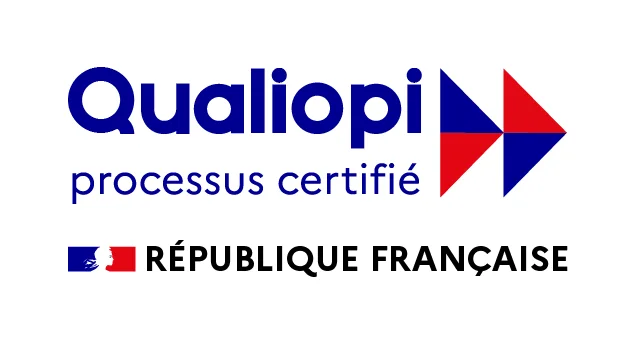Work Breakdown Structure (WBS): The Complete Guide to Optimize Your Project Management in 2025

The Work Breakdown Structure (WBS) represents a fundamental method for organizing and effectively managing your projects. This methodical approach allows you to break down a complex project into smaller, manageable elements, facilitating planning and monitoring.
The Fundamentals of the WBS Method in Project Management
Definition and Objectives of Task Organization Chart
The task organization chart represents a hierarchical visualization that structures project deliverables according to a top-down logic. This representation starts with the global objective and then breaks down into subsets down to elementary tasks.
Optimal breakdown is generally performed over 3 to 4 levels maximum. For example, in a construction project, the first level "Structural Work" is divided into "Foundations", "Load-bearing walls" and "Framework", each detailed in specific activities. However, it is possible to have more levels depending on the project"s complexity and the need to further detail task decomposition.
Key Principles of an Effective WBS Structure
The success of a WBS relies on respecting fundamental rules. Each element must be measurable and controllable, with a clearly defined scope. A work package should not exceed 80 hours of effort to ensure optimal monitoring.
Completeness constitutes a major criterion: no task necessary to achieve objectives should be forgotten. Deliverables must remain mutually exclusive to avoid any overlap in responsibilities.
A results-oriented approach takes priority over action description. For example, rather than "Write the specifications", favor "Validated specifications". This formulation reinforces clarity of expectations and facilitates progress evaluation.
How to Build a WBS Step by Step
Step 1: Identification of Main Deliverables
The first fundamental step consists of analyzing the specifications and initial project documentation to extract the main objectives. A mobile application development project requires, for example, identifying major functionalities like login module, user interface, or payment system.
Establishing an exhaustive list of deliverables relies on consulting key stakeholders. Experienced project managers recommend organizing collaborative workshops to validate this first decomposition.
Step 2: Hierarchical Task Breakdown
Creating an optimal structure requires a precise breakdown methodology. The first level establishes the project's major orientations. The second level details each component into coherent subsets. The third level refines granularity down to elementary activities.
A fundamental rule applies: each upper level must represent the totality of the scope of lower levels. For example, in a digital marketing project, the advertising campaign breaks down into graphic creation, content writing, and media planning.
Step 3: Structure Validation and Adjustment
The validation phase requires a rigorous iterative process. A first review with team members allows evaluating the relevance of elements and their overall coherence.
Experience shows that a standard project generally requires 3 to 4 revision cycles before reaching its optimal form. At each stage, project participants refine descriptions, remove redundancies, and harmonize terminology.
Different Types of WBS Matrices
Deliverable-Oriented Structure
The deliverable-oriented structure places tangible results at the heart of project organization. This pragmatic approach facilitates concrete measurement of progress achieved at each development stage.
An experienced project manager knows that decomposition based on deliverables reinforces objective clarity for the entire team. Take the example of a digital marketing campaign: the breakdown is articulated around expected productions like the website, advertising visuals, or analysis reports.
Phase-Based Structure
Chronological breakdown represents a relevant alternative for decomposing a project. This method organizes tasks according to their execution sequence, from launch to closure.
The temporal approach facilitates resource planning and critical path monitoring. For example, in house construction, foundations necessarily precede structural work, which itself precedes finishes.
Mixed and Adaptive Structure
The flexibility of a hybrid structure allows adapting breakdown according to each project's specificities. This approach judiciously combines organization by deliverables and temporal sequencing to maximize management efficiency.
Practical Applications by Sector
WBS for IT Projects
Structuring an IT project requires particular attention to development cycles. Effective breakdown takes into account analysis, design, development, and testing phases.
Agile projects adopt a sprint-based approach, where each WBS level corresponds to a major software functionality. Example: for an e-commerce mobile application, the first level includes user authentication, product catalog, and shopping cart.
WBS for Construction Projects
Creating a WBS in the building sector is articulated around major construction site phases. From earthwork to finishes, each stage is subject to precise breakdown that integrates technical and regulatory constraints.
Upper levels generally group major assemblies like site preparation, foundations, structural work, and secondary work. Breakdown continues down to specialized lots: plumbing, electricity, carpentry.
WBS for Marketing Projects
Creating a marketing WBS requires particular attention to commercial objectives and communication channels. Relevant breakdown integrates market studies, content strategy, advertising campaigns, and results analysis.
Take the example of a product launch: the first level includes marketing research, support creation, media planning, and KPI monitoring. Each branch then ramifies toward precise actions like competitive study or visual production.
Best Practices and Errors to Avoid
WBS success relies on rigorous methodology. Avoid multiplying hierarchical levels beyond 5 tiers. This limitation ensures better readability and facilitates task management by teams.
Another essential point concerns title precision. Each element must be formulated with concrete, measurable terms understandable by all stakeholders. For example, prefer "Write test specifications" rather than "Prepare quality".
Project managers must also ensure maintaining consistent granularity between elements of the same level. Unbalanced breakdown complicates monitoring and risks creating confusion in responsibility attribution.
The Best Tool for Creating a WBS
Setting up a WBS requires using project management tools. This is where LUCKiwi, an all-in-one project management software, comes into play. This software offers a complete range of functionalities to facilitate project planning, management, and monitoring, including WBS creation.
Here are the 5 main reasons why you should turn to LUCKiwi's WBS:
Unlimited Division: You have no constraints on the number of task and subtask levels you wish to define to successfully complete your project.
Easy: LUCKiwi WBS is easy to use. With its drag-and-drop function, it allows users to quickly organize all tasks and subtasks in the correct hierarchical order.
Configurable: LUCKiwi WBS adapts to your needs. Not only can you modify the structure of tasks and subtasks, but you can also define other information.
Accessible: You can access LUCKiwi's WBS via any device you use (computer, tablet, smartphone), with as many devices as you want and without any required installation.
Support: We offer excellent customer support. If you have questions or need clarification on our offers, our customer service will be happy to help you.
Conclusion
In conclusion, creating a WBS is not difficult if you use an appropriate project management tool. The Work Breakdown Structure represents a fundamental element for your project success, enabling clear organization, efficient planning, and rigorous monitoring.
If you're looking for an effective way to manage your projects with a WBS, you should definitely try LUCKiwi. It's an all-in-one project management tool that will allow you to easily create a WBS, track your project progress, and collaborate effectively with your team.






